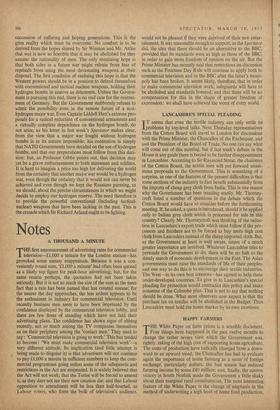T HE White Paper on farm prices is a sensible document.
Four things have happened in the past twelve months to change the rather severe view which the Government was, rightly, taking of the high cost of supporting home agriculture. The costs of production have radically changed from a down- ward to an upward trend; the Chancellor has had to evaluate again the importance of home farming as a saver of foreign exchange, particularly dollars; the bad season has reduced farming income by some £40 million; and, finally, the narrow victory in South Norfolk made the Government a little shaky about their marginal rural constituencies. The most interesting feature of the White Paper is the change of emphasis in the method of underwriting a high level of home food production, and the equanimity with which the farmers have accepted it. A quite exceptionally large proportion of the additional £28 million is being given in the form of production grants— acreage payments, lirding and fertiliser subsidies. This has largely silenced those critics who hold with some justice that this is the right end of the production cycle at which to inject Exchequer support. It has not been forgotten that the farmers who most need assistance are those who benefit only indirectly from higher guaranteed prices—the marginal and hill farmers who produce little in the way of end products. That is one factor. Another is that the production grant system of support aids general efficiency because it is up to the farmer to translate the benefit into actual profit.











































 Previous page
Previous page